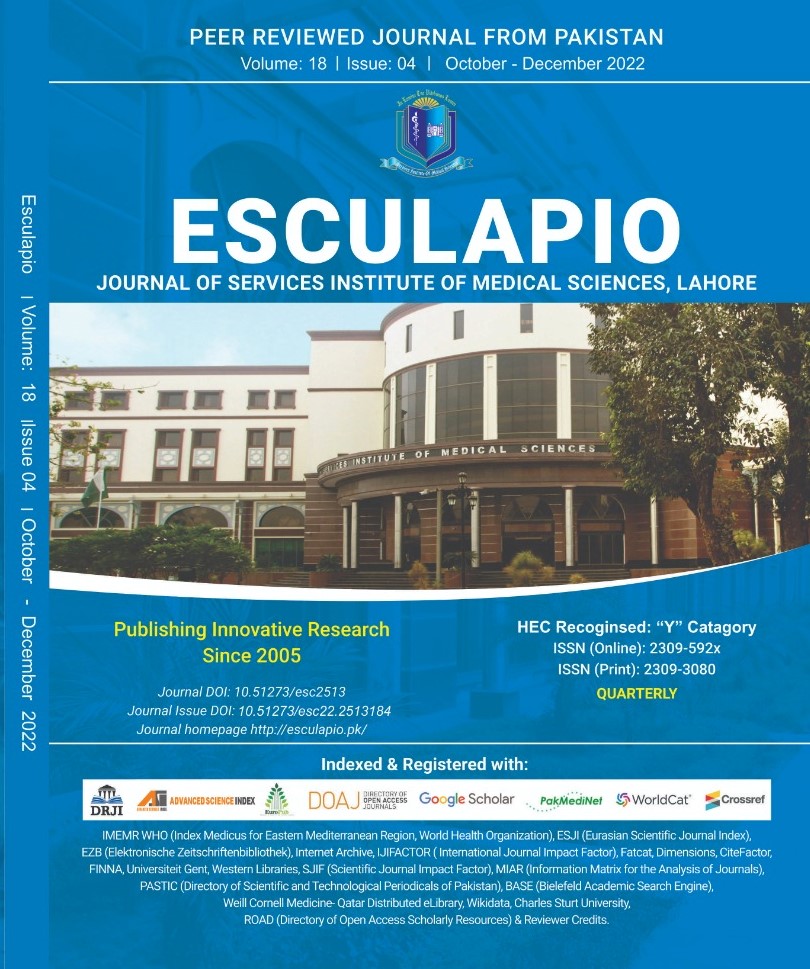Outcomes After Close Reduction and Percutaneous Pinning of Gartland Type III & IVSupracondylarDistal Humerus Fracture in Children
DOI:
https://doi.org/10.51273/esc22.2518425Keywords:
Gartland type III & IV, Supracondylar Fracture, Humerus Fracture, Percutaneous PinningAbstract
Objective: To assess the outcome and complications after close reduction and fixation with k wires of
Gartland type III & IVsupracondylar fracture of Humerus in children.
Method: This prospective study was done using a non-probability purposive sampling technique between
November2009toOctober2020.200children, agebetween01-10yearGartlandIII&IVsupracondylarfracture of
distal humerus presented within 48-hour of the injury were included, and children with neurovascular injury,
refracture, skeletal dysplasia, open fractures, and trauma presenting after 2 days were excluded. Maximum
three Close attempts were made to reduce the fracture and K-wires were used to fix the supracondylar fracture.
Flynn criteria, ROM, Ulno-humeral angle, carrying angle, and Bouman angle were assessed at each followup visit. Bone union by hammer et al and complication were evaluated.
Results: There were 133 (66.5%) were boys, and 67 (33.5%) were girls. The mean age of the children was 5.2
± 3.1years having rightside dominance 122 (61%). Gartland type-IIIfracture was 115 (57.5%), and type IV was
85 (42.5%). Only 03 (1.5%) had transient ulnar nerve palsy while there was no vascular injury. Superficial
infection at the pin site was observed in 10 (5%) children and one (0.5%) case of pin migration. Cubitus varus
deformity was observed in 03 (1.5%). Although, the operative site has decreased ROM by Baumann angle,
and carrying angle, results were excellent (61%) to good (39%) according to Flynn's Criteria.
Conclusion: Closed reduction and pin fixation in Gartland type III & IV supracondylar fractures in children
is the preferred option with early pin removal and physiotherapy.
How to cite: Akhtar M, Qureshi SA, Javed MT, Cheema OI, Taqi M, Naqshband M, Masood F, Ali A. Outcomes After
Close Reduction and Percutaneous Pinning of Gartland Type III & IV Supracondylar Distal Humerus Fracture in
Children. Esculapio - JSIMS 2022;18(04):248-252










